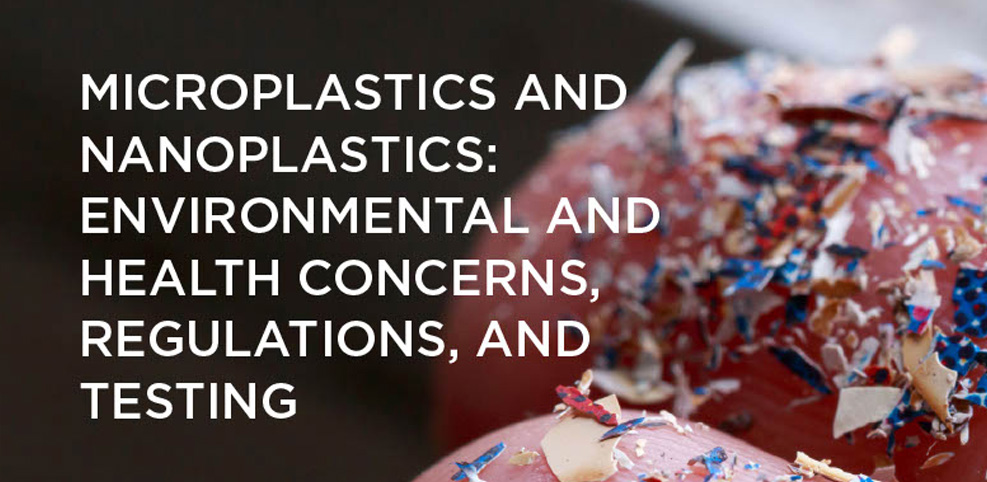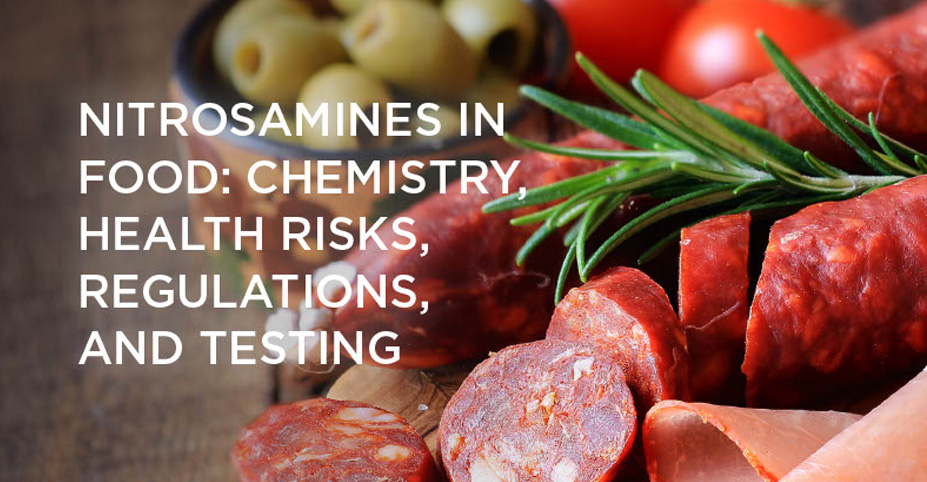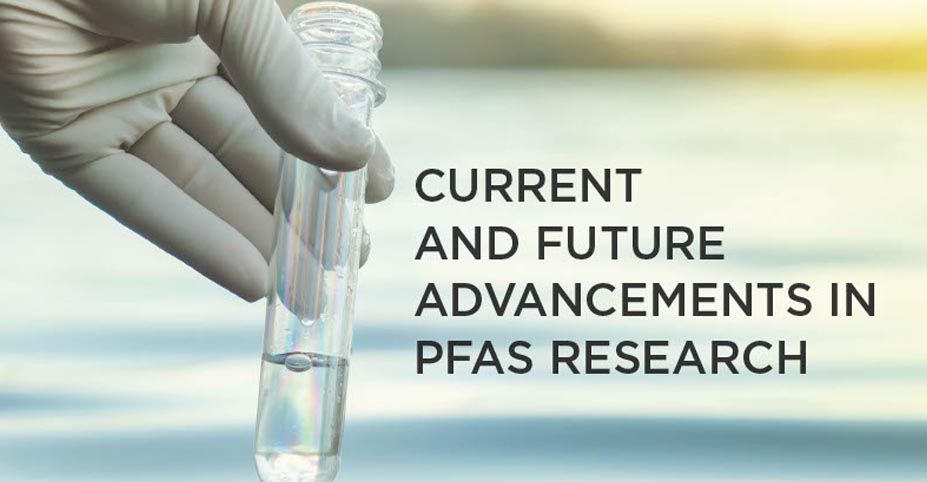Analytical White Papers

Microplastics and Nanoplastics: Environmental and Health Concerns, Regulations, and Testing
Microplastics and nanoplastics are generating growing concern due to their widespread presence in the environment, food, and drinking water. These particles enter ecosystems, where they persist over time and accumulate in organisms. Their detection in a wide range of environmental and biological samples has prompted growing health and regulatory scrutiny. This white paper examines the sources of microplastics and nanoplastics, their environmental and health impacts, evolving regulatory responses, and the analytical methods currently used to detect and characterize them.

Nitrosamines in Food: Chemistry, Health Risks, Regulations, and Testing
Nitrosamines, a class of potentially carcinogenic compounds, are receiving growing attention due to their presence in food, pharmaceuticals, and tobacco. Formed primarily through the reaction of nitrites with amines under acidic or high-temperature conditions, they are particularly associated with processed meats preserved with nitrites and cooked or smoked at high heat. Their detection in food has raised health and regulatory concerns, prompting deeper investigation into their formation, risks, and control measures. This white paper explores nitrosamine formation, associated health risks, current regulations, and available testing methods.

Current and Future Advancements in PFAS Research
Per- and polyfluoroalkyl substances (PFAS) are a class of synthetic chemicals used extensively in various industrial processes and consumer products. Their unique characteristics—resistance to water, heat, oil, and stains—have led to their widespread adoption. However, the very properties that make PFAS useful have resulted in widespread environmental contamination and significant concerns regarding human health. PFAS persist in the environment for decades, accumulating in soil, water, and living organisms. Given the persistence and ubiquity of these chemicals, PFAS have become a critical focus for researchers, regulatory agencies, and public health professionals.
Understanding Spectroscopy
The Study of Energy and Light. One of the first instruments an analyst learns to operate in their career is some form of an energy-based detector. These types of detectors are often at the heart of other spectrometry and chromatography instruments. The basis for many GC and LC instruments is a spectrometry or spectrophotometry configuration in which energy (or light) plays an important role in analysis. There is often a lot of confusion between the terms chromatography, spectroscopy, spectrometry, and spectrophotometry. These concepts are intrinsically linked but are still different approaches to looking at (or measuring) matter with light (or energy). The terms are all based around the Greek word origins for color (chroma-) and light (photo-) combined with the terms” ‘to write’ (graphein), ‘to measure’ (metria), ‘to see’ (skopia), or the Latin ‘to look at’ (specere). The different disciplines can be understood as a general sphere of study with levels of increasing specialty or specificity. Spectrometry (the measurement of the interaction of energy and matter) is the basis for all of the other techniques. There are several types of spectrometry defined by their target and method of measurement. The most common analytical techniques found in the organic laboratory are mass spectrometry and spectroscopy.
Guide for Determining ICP ICP-MS Method Detection Limits
As the term itself implies, one cannot make a measurement below the detection limit. But not everyone has a complete understanding of what the true detection limit is or how it is determined. So what is the method detection limit (MDL)? Standard Methods defines the MDL as: “constituent concentration that, when processed through the complete method, produces a signal with a 99% probability that it is different from the blank” 1. The EPA defines it as: “the minimum concentration that can be determined, with 99% confidence, that the true concentration is greater than zero”2 . The MDL depends on the equipment, chemicals, methodology, materials, sample composition and even the analysts.
ICP ICP-MS CRMs Is There Really a Difference
A blind laboratory study was conducted to compare standards obtained from various manufacturers of certified reference materials. There are two goals for this study: first to objectively determine if a difference exists between an ICP grade standard and an ICP-MS grade standard and second to focus on the equivalency of the ICP-MS grade standard to the ICP/ICP-MS grade of standard. The single-element standard selected for study was 1,000 ppm iron, due to its popularity and known interferences. ICP-MS standards were obtained, whenever possible, directly from the manufacturer; if this was not possible, alternate sources were used. A total of 13 single element Fe standards were analyzed. Two of these were ICPMS grade standards, five were ICP grade standards, and six were stated for use on either an ICP or ICP-MS instrument. The multi-element solutions were selected to be similar to the SPEX CertiPrep CLMS-2 Claritas PPT® ICP-MS standard. See Table 1 for the contents of CLMS-2. This standard was selected since it contains many elements commonly analyzed by ICP-MS. All of the multi-element solutions studied were ICP-MS grade.
The Analysis of Lab and Consumer Water Sources.
Bottled water is a multi-billion dollar a year business with projected growth to over $168 billion in sales worldwide by 2012(1,2). It has gone from a designer fad in the 1980’s and 1990’s to a mainstay of the world consumer experience. In 2007, the average American drank over 29 gallons of bottled water. Overall, the U.S. consumed over 8.8 billion gallons of bottled water(2). Bottled water has become the second largest consumed beverage in the country, behind carbonated beverages(2). The main reasons that Americans gave for drinking bottled water were they were first substituting bottled water for other beverages and second, they were concerned about the safety of their tap water(3). In many countries, especially developing nations, consumers buy bottled water as a safe alternative to their existing water sources(4). The regulation and monitoring of bottled waters in developing countries can be non-existent or less stringent than regulations in more developed nations.
Statistical Approach to Reporting Uncertainty on Certified Values of CRMs
This article discusses an approach by a manufacturer of Calibration Standards and Certified Reference Materials to standardize the reporting of uncertainty associated with certified values quoted on a Certified Reference Material certificate of analysis. The method, based on well-established principles, relies on the authors’ belief that to report accurate and reliable certified values, it is essential to determine the value in the final solution by two independent analytical methods - usually one instrumental technique such as inductively coupled plasmaoptical emission spectrometry (ICP-OES) or inductively coupled plasma-mass spectrometry (ICP-MS), and one traditional wet chemical technique - both traceable to a standard reference material.